Results
-
 £76.99
£76.99Yellow River
The little known English group Christie became famous overnight in 1970 when they released the record Yellow River. Yellow River is a Vietnam era song (a protest against the Vietnam War) and describes the wish of a soldier at the front to return home. Band leader, singer and composer Jeff Christie initially wrote the song for The Tremoloes, but as the group were uncertain about it he decided to record it himself. The result was a number one hit in over 25 countries! The catchy melody and beat were reason enough for Stefan Schwalgin to create this arrangement for concert band.
Estimated dispatch 7-14 working days
-
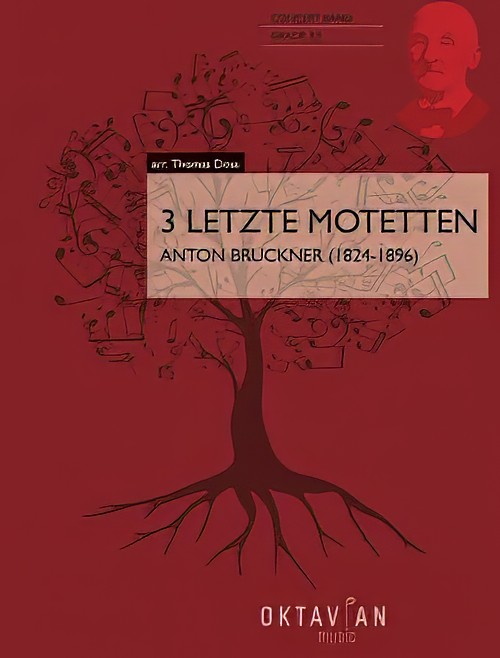 £123.20
£123.203 Letzte Motetten (Concert Band - Score and Parts) - Bruckner, Anton - Doss, Thomas
Anton Bruckner (b. 4.9.1824, Ansfelden, d. 11.10.1896, Vienna) didn't have it easy. Throughout his life, the Austrian composer was plagued by self-doubt. Anton Bruckner came from a simple, rural background. After the death of his father, he was accepted as a choirboy at the monastery of Sankt Florian in 1837. After several years as a school assistant and his own organ and piano studies, he first worked as organist in St. Florian, then from 1855 as cathedral organist in Linz. Introduced to music theory and instrumentation by Simon Sechter and Otto Kitzler, he discovered Richard Wagner as an artistic role model, whom he admired throughout his life and also visited several times in Bayreuth. In 1868 Anton Bruckner became professor of basso continuo, counterpoint and organ at the Vienna Conservatory; ten years later court organist; and in 1891 finally honorary doctor of the University of Vienna. He was considered an important organ virtuoso of his era, but had to wait a long time for recognition as a composer. It was not until Symphony No.7 in E major, composed between 1881 and 1883, with the famous Adagio written under the effects of Wagner's death, that he achieved the recognition he had hoped for, even if he was reluctant to accept it given his inclination towards scepticism and self-criticism. Anton Bruckner was a loner who did not want to follow a particular school or doctrine. He composed numerous sacred vocal works, such as his three masses, the Missa Solemnis in B flat minor (1854), the Te Deum (1881-84) and numerous motets. As a symphonic composer, he wrote a total of nine symphonies and many symphonic studies from 1863 onwards, tending to revise completed versions several times over. Bruckner's orchestral works were long considered unplayable, but in fact were merely exceptionally bold for the tonal language of their time, uniting traditions from Beethoven through Wagner to folk music, on the threshold between late Romanticism and Modernism. Anton Bruckner composed about 40 motets during his lifetime, the earliest a setting of Pange lingua around 1835, and the last, Vexilla regis, in 1892. Thomas Doss has compiled some of these motets in this volume for symphonic wind orchestra. These motets show many characteristics of personal expression, especially Bruckner's colourful harmony in the earlier works, which is in places aligned with Franz Schubert (changes between major and minor; and movements in thirds). Later works are characterised by many components which, in addition to the expanded stature of the movements, include above all a sense of the instrumentation as an outward phenomenon and the harmony as a compositional feature that works more internally. Some aspects of Bruckner's work are the result of his long period of study, which familiarised him not only with the tradition of his craft, but also gave him insights into the "modernity" of his time in such composers as Wagner, Liszt and Berlioz. From this developed his personal standpoint, which always pursues the connection between the old and the new.Duration: 14.00
Estimated dispatch 7-14 working days
-
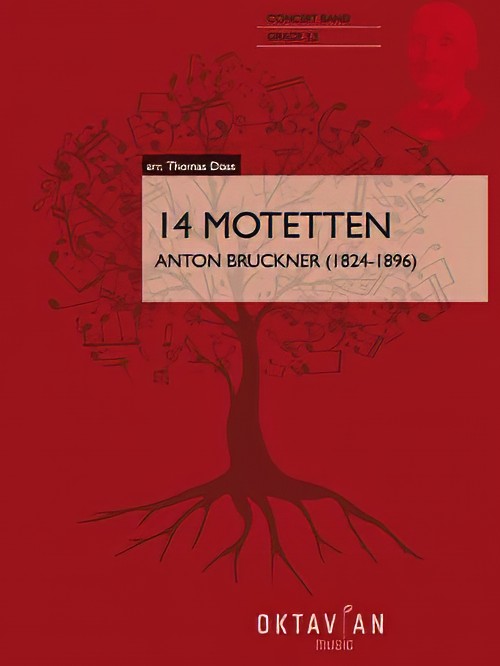 £256.00
£256.0014 Motetten (Concert Band - Score and Parts) - Bruckner, Anton - Doss, Thomas
Anton Bruckner (b. 4.9.1824, Ansfelden, d. 11.10.1896, Vienna) didn't have it easy. Throughout his life, the Austrian composer was plagued by self-doubt. Anton Bruckner came from a simple, rural background. After the death of his father, he was accepted as a choirboy at the monastery of Sankt Florian in 1837. After several years as a school assistant and his own organ and piano studies, he first worked as organist in St. Florian, then from 1855 as cathedral organist in Linz. Introduced to music theory and instrumentation by Simon Sechter and Otto Kitzler, he discovered Richard Wagner as an artistic role model, whom he admired throughout his life and also visited several times in Bayreuth. In 1868 Anton Bruckner became professor of basso continuo, counterpoint and organ at the Vienna Conservatory; ten years later court organist; and in 1891 finally honorary doctor of the University of Vienna. He was considered an important organ virtuoso of his era, but had to wait a long time for recognition as a composer. It was not until Symphony No.7 in E major, composed between 1881 and 1883, with the famous Adagio written under the effects of Wagner's death, that he achieved the recognition he had hoped for, even if he was reluctant to accept it given his inclination towards scepticism and self-criticism. Anton Bruckner was a loner who did not want to follow a particular school or doctrine. He composed numerous sacred vocal works, such as his three masses, the Missa Solemnis in B flat minor (1854), the Te Deum (1881-84) and numerous motets. As a symphonic composer, he wrote a total of nine symphonies and many symphonic studies from 1863 onwards, tending to revise completed versions several times over. Bruckner's orchestral works were long considered unplayable, but in fact were merely exceptionally bold for the tonal language of their time, uniting traditions from Beethoven through Wagner to folk music, on the threshold between late Romanticism and Modernism. Anton Bruckner composed about 40 motets during his lifetime, the earliest a setting of Pange lingua around 1835, and the last, Vexilla regis, in 1892. Thomas Doss has compiled some of these motets in this volume for symphonic wind orchestra. These motets show many characteristics of personal expression, especially Bruckner's colourful harmony in the earlier works, which is in places aligned with Franz Schubert (changes between major and minor; and movements in thirds). Later works are characterised by many components which, in addition to the expanded stature of the movements, include above all a sense of the instrumentation as an outward phenomenon and the harmony as a compositional feature that works more internally. Some aspects of Bruckner's work are the result of his long period of study, which familiarised him not only with the tradition of his craft, but also gave him insights into the modernity of his time in such composers as Wagner, Liszt and Berlioz. From this developed his personal standpoint, which always pursues the connection between the old and the new.Duration: 39.00
Estimated dispatch 7-14 working days
-
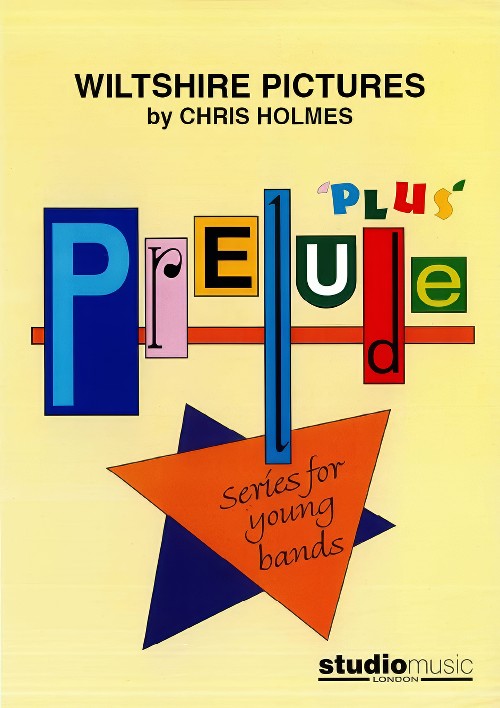 £59.95
£59.95Wiltshire Pictures (Concert Band - Score and Parts) - Holmes, Chris
Movement 1: Army on the Plain - More than 10% of Wiltshire is used by the Army for training, and all of it takes place on Salisbury Plain. As well as tanks and weapons of all sizes, there is plenty of marching!Movement 2: Spire - Since 1549 Salisbury Cathedral has had the tallest spire in the UK, at 123 metres. Majestic and awesome it soars over the elegant and peaceful Cathedral Close.Movement 3: Sarsen Stones - Stonehenge's vertical Sarsens weigh 20 tonnes and stand 7 metres tall, they are heavy!Movement 4: Moonrakers - From the 15th to the 18th century, there was much smuggling of illegal gin in Wiltshire. The story goes that a group that was trying to rake out barrels hidden in a village pond, and surprised by the Excisemen, feigned stupidity. They told the Excisemen they were trying to rake in the moon, reflected on the ponds surface. They were believed and left in peace! Wiltshire folk can still call themselves Moonrakers.Duration: 11:15
Estimated dispatch 7-14 working days
-
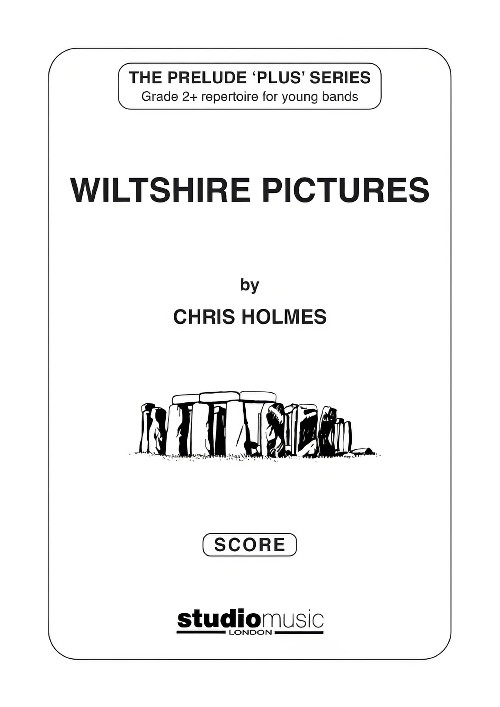 £11.95
£11.95Wiltshire Pictures (Concert Band - Score only) - Holmes, Chris
Movement 1: Army on the Plain - More than 10% of Wiltshire is used by the Army for training, and all of it takes place on Salisbury Plain. As well as tanks and weapons of all sizes, there is plenty of marching!Movement 2: Spire - Since 1549 Salisbury Cathedral has had the tallest spire in the UK, at 123 metres. Majestic and awesome it soars over the elegant and peaceful Cathedral Close.Movement 3: Sarsen Stones - Stonehenge's vertical Sarsens weigh 20 tonnes and stand 7 metres tall, they are heavy!Movement 4: Moonrakers - From the 15th to the 18th century, there was much smuggling of illegal gin in Wiltshire. The story goes that a group that was trying to rake out barrels hidden in a village pond, and surprised by the Excisemen, feigned stupidity. They told the Excisemen they were trying to rake in the moon, reflected on the ponds surface. They were believed and left in peace! Wiltshire folk can still call themselves Moonrakers.Duration: 11:15
Estimated dispatch 7-14 working days
-
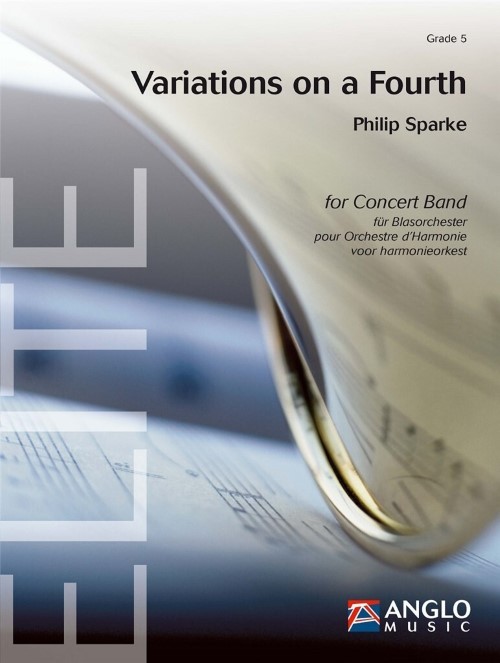 £126.50
£126.50Variations on a Fourth (Concert Band - Score and Parts) - Sparke, Philip
Variations on a Fourth was written for an innovative project initiated by the Siena Wind Orchestra from Tokyo. Four European and four Japanese composers created a new wind orchestra piece for a special concert held on 15 June 2019 in Bunkyo Civic Concert Hall, where all eight works - that were recorded for a CD release the previous day - were performed. Variations on a Fourth comprises four variations, all of which feature the musical interval of a fourth in much of their melodic and harmonic material. The result is a four-movement work of wide-ranging appeal that will be an absolute joy to play! Duration: 8.00
Estimated dispatch 7-14 working days
-
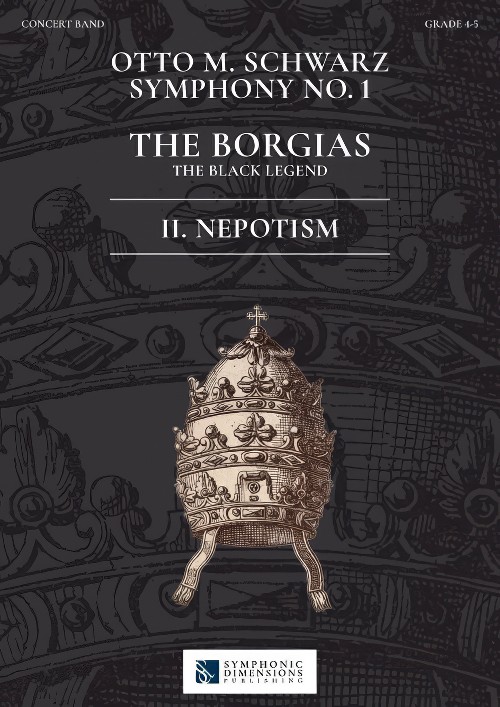 £148.99
£148.99Nepotism (Movement II from Symphony No.1, The Borgias) (Concert Band - Score and Parts) - Schwarz, Otto M.
A sinister legend hangs over the Borgia family, a legend of corruption, abuse of power, orgies, sex and murder. These rumours proliferated especially during the papacy of Alexander VI, a descendant of the family, who was even called the Antichrist. On his death, contemporary witnesses reported that the devil himself prowled around the death chamber and a black dog run along the corridors of the Vatican as his emissary. One might say that this Borgia pope, who ruled together with his family with the greatest brutality, became demonised. Unscrupulousness, poison-toting, incest and other malice are to this day the hallmarks of this pontiffNepotism: Rodrigo Borgia was elected Pope on 11 August 1492. From the very start, the new pope was prepared to use any means to eliminate his opponents, either through the infamous Borgia poison or by excommunication and execution. His son Cesare, who wanted little to do with the church, was appointed cardinal against his will. Alessandro Farnese, broth of Giulia Farnese, the Pope's mistress, also became a cardinal. Numerous Spaniards were brought into the country and were appointed to ecclesiastical posts. This infuriated the opponents of Alexander VI. The Dominican Girolamo Savonarola from Florence demanded the removal of the Pope. He was tortured and banned. Giuliano della Rovere wanted to convene councils to depose the Pope, which Alexander managed to prevent through artful political manoeuvrings. Through great brutality, brilliant political skill and power games, this pope was able to achieve his goal of leaving for his children a great legacy. Alexander VI constantly changed his allies and always acted unscrupulously to improve his financial situation and expand his sphere of influence. At the centre of the second movement of this work is the medieval hymn Dies Irae (Day of Wrath), which acts as a warning in the background condemning the Pope's actions.Duration: 9.15
Estimated dispatch 7-14 working days
-
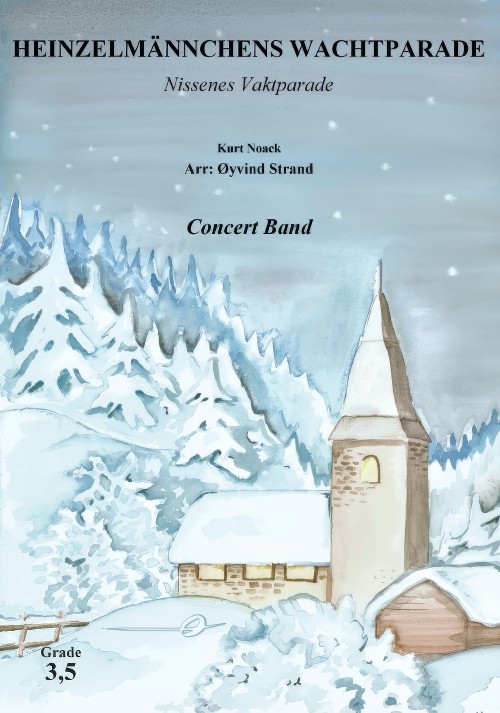 £94.00
£94.00Heinzelmannchens Wachtparade (Concert Band - Score and Parts) - Noack, Kurt - Strand, Oyvind
The story of the Heinzellmannchen (Gnomes) is connected to the German city of Cologne. The gnomes were small creatures living underground but appeared during the night, when the people were asleep, doing all the work that had to be done in the city, so that the citizens of Cologne could be lazy, relaxing the whole day. At last, there was a tailor's wife getting so curious about the gnomes that she scattered dried peas onto the floor so that the gnomes slipped and fell, making a lot of noise. The gnomes got infuriated and disappeared forever and the citizens of Cologne must thereafter do all the work themselves.Kurt Noack (1893-1945) was a German composer, arranger and orchestra leader, working mainly with light music and marches. The characteristic piece Heinzellmannchens Wachtparade (Gnome's parade) from 1912 is his most famous composition, originally written for piano.This arrangement is made a little parodic, filled with joyful interjections, trying to give these little gnomes a bit of character, with pictures from Disney's Santa's workshop in mind.Duration: 7.00
Estimated dispatch 7-14 working days
-
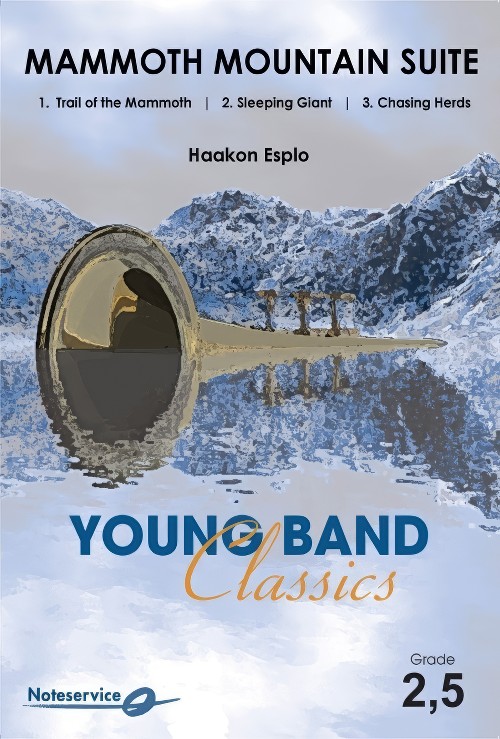 £85.00
£85.00Mammoth Mountain Suite (Concert Band - Score and Parts) - Esplo, Haakon
Suite in Three Movements. Mammoths were a family of elephants that, with one exception, died out at the end of the last ice age. Their closest living relative is the Asian elephant. In many places in the world one can find mammoth remains. In Norway (especially in Gudbrandsdalen), 20 discoveries of teeth and skeletal remains have been made after mammoths that lived here between 40,000 and 50,000 years ago. On cave paintings and carvings you can see many pictures of mammoths with other animals. Pictures of killed mammoths have also been found with humans. Mammoth Moutain Suite describes a bunch of hunters looking for mammoths. Imagine the majestic animals, what it felt like to see the herd in the mountains and what it sounded like when the 6 ton heavy and 3.5 meter tall mammoths were on the run. Duration: 7.30
Estimated dispatch 7-14 working days
-
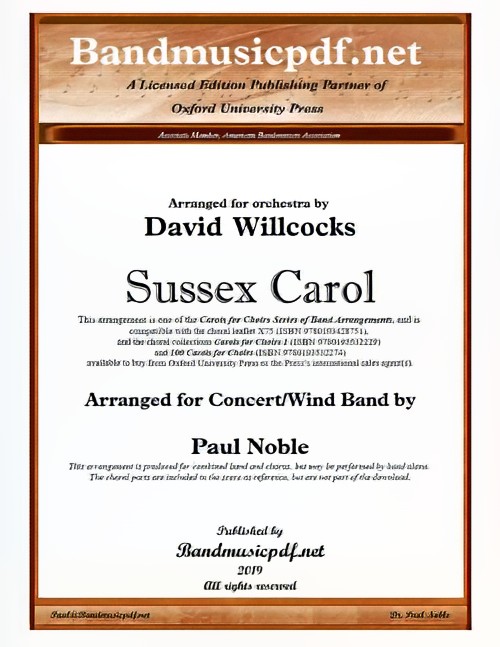 £75.00
£75.00Sussex Carol (Concert Band with Optional Choir - Score and Parts) - Noble & Willcocks
The Sussex Carol is a Christmas carol popular in Britain, sometimes referred to by its first line On Christmas night all Christians sing. Its words were first published by Luke Wadding, a 17th-century Irish bishop, in a work called Small Garland of Pious and Godly Songs (1684). It is unclear whether Wadding wrote the song or was recording an earlier composition. Both the text and the tune to which it is now sung were discovered and written down by Cecil Sharp in Buckland, Gloucestershire, and Ralph Vaughan Williams, who heard it being sung by a Harriet Verrall of Monk's Gate, near Horsham, Sussex (hence Sussex Carol). The tune to which it is generally sung today is the one Vaughan Williams took down from Mrs. Verrall and published in 1919.
Estimated dispatch 7-14 working days
